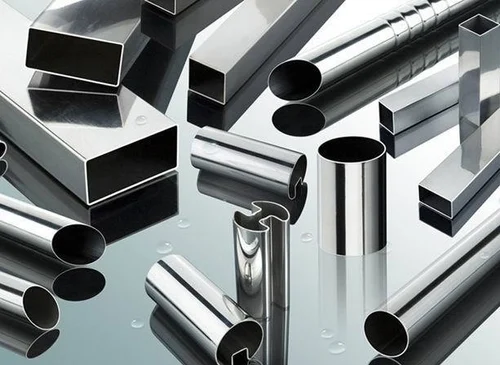Stainless steel, known for its durability and resistance to corrosion, is a fundamental material in various industries. Among the numerous grades available, SS304 stands out due to its versatility and widespread use. This grade, often referred to as A2 stainless steel, is an alloy containing 18% chromium and 8% nickel, making it highly resistant to rust and corrosion. Understanding the SS304 rate per kg is crucial for manufacturers, suppliers, and buyers who rely on this material for their operations.
Chemical Composition and Properties of SS304
SS304's unique properties stem from its chemical composition. The primary elements include:
- Chromium (18-20%): Enhances corrosion resistance and hardness.
- Nickel (8-10.5%): Increases toughness and resistance to oxidation.
- Carbon (≤0.08%): Maintains strength while ensuring weldability.
- Manganese (≤2%): Improves toughness and hardness.
- Silicon (≤1%): Enhances strength and flexibility.
- Phosphorus (≤0.045%) and Sulfur (≤0.03%): Present in minor amounts to control machinability and corrosion resistance.
These elements collectively impart excellent mechanical properties to SS304, including:
- High tensile strength: Approximately 515 MPa.
- Good ductility: Allows for extensive shaping and forming.
- Exceptional corrosion resistance: Ideal for use in environments exposed to moisture and chemicals.
Factors Influencing SS304 Rate per Kg
Several factors affect the stainless steel 304 price, and understanding these can help in making informed purchasing decisions:
1. Market Demand and Supply
The law of demand and supply plays a significant role. High demand coupled with limited supply can drive prices up, while abundant supply and lower demand can reduce the rate.
2. Raw Material Costs
The prices of raw materials such as chromium and nickel directly impact the cost of SS304. Fluctuations in the global markets for these metals can lead to price changes.
3. Production and Manufacturing Costs
Costs associated with manufacturing processes, including energy, labor, and technological advancements, influence the final pricing of SS304.
4. Import and Export Tariffs
Tariffs and trade policies between countries can affect the cost of stainless steel. Higher tariffs on imports can increase the rate per kg in domestic markets.
5. Currency Exchange Rates
Since stainless steel is traded globally, fluctuations in exchange rates can impact prices. A stronger domestic currency can make imports cheaper, reducing the local rate per kg.
6. Economic Conditions
Global economic conditions, including inflation rates and economic growth, influence market dynamics and, subsequently, the pricing of SS304.
Current SS304 Rate per Kg
As of the latest market data, the stainless steel price per kg ranges from $2.50 to $3.00 per kg. However, prices can vary based on the factors mentioned above, and it is advisable to check current market trends and forecasts.
Applications of SS304 Stainless Steel
SS304's properties make it suitable for a wide range of applications:
1. Construction and Architecture
SS304 is extensively used in building facades, roofing, and structural components due to its aesthetic appeal and resistance to environmental elements.
2. Automotive Industry
In the automotive sector, SS304 is used in exhaust systems, trim, and other components that require high strength and corrosion resistance.
3. Food and Beverage Industry
The food industry relies on SS304 for equipment and containers due to its non-reactive nature and ease of cleaning, ensuring hygiene and safety.
4. Medical Equipment
SS304 is a preferred material for manufacturing surgical instruments and medical devices, thanks to its biocompatibility and resistance to sterilization processes.
5. Chemical Processing
Its ability to withstand harsh chemicals makes SS304 ideal for tanks, piping, and reactors in chemical plants.
Advantages of SS304 Stainless Steel
Choosing Stainless Steel 304 Pipes offers several benefits:
- Durability and Longevity: Its resistance to corrosion and oxidation ensures long service life.
- Versatility: Suitable for a wide range of applications across different industries.
- Aesthetic Appeal: Maintains a polished, attractive appearance.
- Recyclability: Environmentally friendly as it can be recycled without loss of properties.
- Cost-Effective: Despite higher initial costs, its durability and low maintenance make it a cost-effective choice in the long run.
Buying Tips for SS304 Stainless Steel
When purchasing SS304 stainless steel, consider the following tips:
- Verify the Source: Ensure the supplier is reputable and the material is certified.
- Check the Specifications: Confirm the chemical composition and mechanical properties meet your requirements.
- Request Samples: Obtain samples for testing, especially for critical applications.
- Negotiate Prices: Compare prices from multiple suppliers and negotiate for the best rate.
- Monitor Market Trends: Stay informed about market conditions and price fluctuations.
Conclusion
SS304 stainless steel remains a cornerstone in various industries due to its exceptional properties and versatility. Understanding the factors that influence its rate per kg, staying updated with market trends, and making informed purchasing decisions can help businesses optimize their costs and operations.



